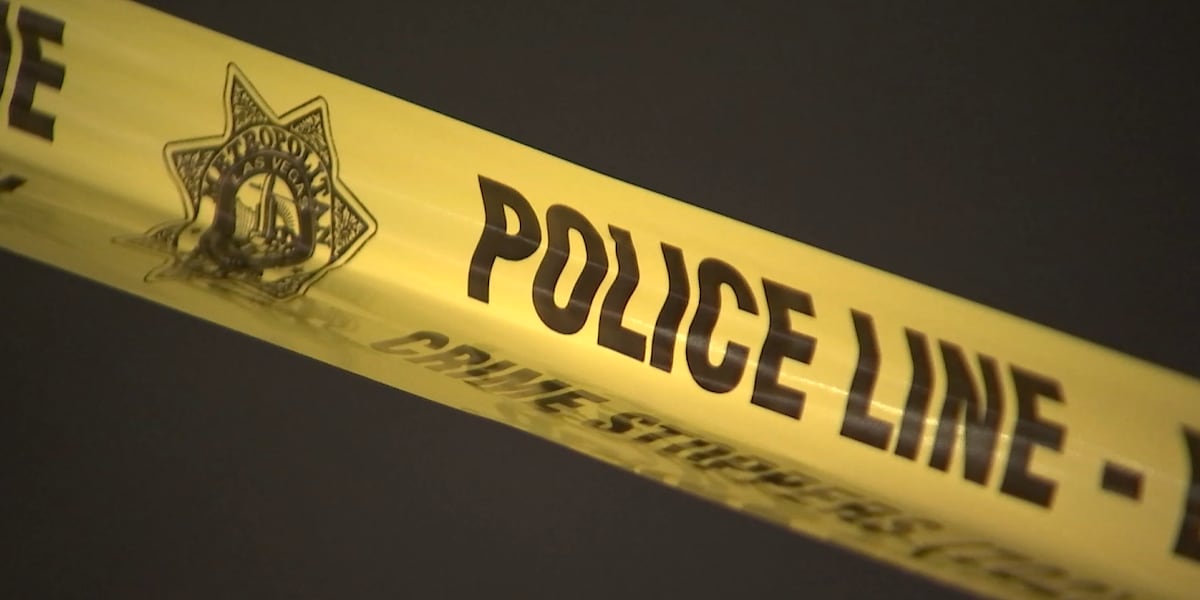Nevada
Nevada Republicans have approved rules for their presidential caucus seen as helping Donald Trump

RENO, Nev. — The Nevada Republican Party approved rules Saturday for their presidential caucus that many campaigns suspect are meant to help former President Donald Trump win the state’s GOP delegates.
The provisions would bar any candidate from the Feb. 8 caucus if they participate in the state-run primary two days earlier. They would also restrict super PACs, like the one Florida Gov. Ron DeSantis is relying on, from trying to bolster support for candidates in a caucus.
The party approved the new rules at a closed-door meeting of its central committee. Two people familiar with the matter confirmed the result to The Associated Press. The people spoke on condition of anonymity because they were not authorized to discuss the vote publicly.
The moves reflect Trump’s grip on many state parties and his status as the perennial frontrunner, particularly in Nevada, where the state GOP is run by allies of the former president.
For months, the Nevada Republican Party has insisted on holding a caucus despite a state law passed in 2021 requiring state and county governments to offer a presidential primary if at least two candidates are on the ballot.
The state-run primary will occur on Feb. 6, two days before the caucus. But those results will likely be symbolic since the state party refuses to use them to determine delegates. The national Republican Party generally allows state parties to decide how they will award delegates.
The caucuses also call for voter ID, paper ballots and only same-day voting. Nevada’s election laws, used in the state-run primary, require universal mail-in ballots, early voting, same-day registration, and require an ID to register to vote, but not at the polls.
The result could mean widespread confusion for Republican voters if two presidential nominating processes happen within the span of three days.
Many state Republican parties made changes to their rules ahead of the 2020 election by adding more winner-take-all contests and requiring candidates to earn higher percentages of the vote to claim any delegates. Trump has met with party chairs in Nevada, Louisiana, Pennsylvania, Florida and New Jersey.
In Michigan, where the state GOP has become increasingly loyal to Trump, the party’s leadership voted to change the state’s longtime process of allocating all its presidential delegates based on an open primary election. Now, 16 of the state’s 55 delegates will be awarded based on the results of a Feb. 27 primary, while the other 39 will be come from a closed-door caucus meetings of party activists.
Those changes, along with others in Idaho, Louisiana and Colorado, all benefit a frontrunner – in this case Trump – and has sometimes elicited intra-party strife.
The Nevada Republican Club, which says it represents about 400 members in the state, sent a letter to local GOP officials this month urging them to speak out about the potential problems with the state having both a primary and a caucus and to defeat the proposed rule changes.
Michael McDonald, the chair of the Nevada GOP who was a fake elector for Donald Trump in 2020, had previously told The Associated Press that the party pushed the caucus since Democrats in the state Legislature did not consider Republican Gov. Joe Lombardo’s election integrity measures, particularly voter ID.
“Nevada is currently missing Voter ID, transparent tabulation in elections, precinct-based voting, and we see our streets and trash cans flooded with unsolicited mail in ballots,” McDonald wrote in his call to action before the meeting. “I will NEVER give up the fight for free and fair elections.”
Jim DeGraffenreid, a Republican National Committeeman for the Nevada GOP, previously called the idea that Nevada’s process is skewed for Trump “one of the most ridiculous things that I think I’ve ever heard.”
“It appears that Donald Trump is the last person that needs a thumb on the scale,” DeGraffenreid said, citing the former president’s polling and fundraising strength. “It is not in our interest to rig anything for anyone, especially for someone who apparently doesn’t need to have anything rigged for him.”

Nevada
Henderson police investigate possible remains of missing 17-year-old girl

LAS VEGAS, Nev. (FOX5) – Henderson police are investigating the possible remains of a 17-year-old girl who went missing last week.
According to police, the remains were discovered and reported around 10:42 a.m. in the desert area of Desert Sunflower Circle and Spanish Needle Street.
Arriving officers noted that the remains matched the description of Jennaleah Min, who was reported missing last Monday, Dec. 30, 2024.
An initial investigation found that there are no apparent signs of foul play, though it’s still in its early stages.
Parents of Foothill High School students received the following letter over the weekend:
The coroner has not identified the remains yet, though FOX5 has reached out for confirmation.
This is a developing story, check back later for updates.
Copyright 2025 KVVU. All rights reserved.
Nevada
Henderson Police investigate body matching description of missing 17-year-old girl

HENDERSON (KTNV) — Henderson Police are investigating reports of a dead woman in the desert area near Desert Sunflower Circle and Spanish Needle Street on Sunday morning.
The body matches the description of Jennaleah “Jenna” Hin, the missing 17-year-old girl, according to Henderson Police.
READ MORE: Search underway for missing 17-year-old girl last seen leaving home in Henderson
Local News
Search underway for missing 17-year-old girl last seen leaving Henderson home
Jennaleah Reyes Hin was last seen leaving her home in the 1200 block of Grove Park Street at 8:46 p.m. on Monday, Dec. 30.
Now, a makeshift memorial is forming in the area where the body was recovered, with community members dropping off flowers in her honor.
According to officials, she’s never ran away before.
“Straight A student, exemplary in every way, never had problems with her mom and dad,” officials said.
On Sunday, many in our Valley showed an outpouring of support on social media.
One user wrote, “This is horrific. Thoughts are with her family and everyone who knew her and the students and staff at Foothill.”
Another user wrote, “My heart breaks for her parents.”
I did reach out to Hin’s stepfather, Corey Swanson.
A spokesperson for the family returned a comment saying “He will not be answering any texts or calls at this time in relation to the recent development for this tragedy.”
Henderson police say the Clark County Coroner’s Office still needs to confirm the identity of the person whose body was found. They do not believe there was foul play.
Anyone with information in this case is urged to call the Henderson Police Department at 702-267-4911, 3-1-1, or, to remain anonymous, call Crime Stoppers at 702-385-5555 or visit Crime Stoppers website. Tips directly leading to a felony arrest, or an indictment processed through Crime Stoppers, may result in a cash reward.
Nevada
Dams in quake-prone Nevada are vulnerable. Near Tahoe, the state is shoring one up – Carson Now

By Amy Alonzo — Dwarfed by drought, the warming climate and other, more immediate environmental threats, earthquakes aren’t at the forefront of most Nevadans’ minds.
But through the mid-20th century, Nevada was known as an earthquake state. While the state has experienced few sizable quakes since then, recent temblors have caught the attention of those who monitor earthquakes.
On Dec. 5, waves of water in the cave that houses rare Devil’s Hole pupfish in Death Valley National Park sloshed nearly 2 feet high after a 7.0 magnitude earthquake struck off the coast of California.
Just four days later, a 5.8 magnitude quake struck on an unnamed fault between Yerington and Silver Springs, shaking Northern Nevada and sending objects flying in some buildings.
Neither of the earthquakes resulted in any substantial damage — the California earthquake was too far offshore, while the Nevada quake had its epicenter in a remote area — but they are reminders that seismic activity could result in significant damage to the state’s aging infrastructure. It’s why state officials are proactively shoring up some of Nevada’s oldest earthen dams that, if shaken to the point of breaking, could cause water supply contamination for tens of thousands of people and deadly floods.
Earthquake magnitude is measured on a scale of 1 to 10, with damage starting to be visible around magnitude 5; by magnitude 6, buildings could see structural damage requiring repairs. Nevada experiences about one magnitude 6 earthquake per year, said Christie Rowe, director of the Nevada Seismological Laboratory at the University of Nevada, Reno, but almost always in a remote portion of the state.
If a magnitude 6 or greater earthquake were to occur in Las Vegas, Reno or another densely populated portion of the state, “there’s going to be a lot [of] impact,” Rowe said.
In the case of the recent earthquakes with epicenters in Yerington and off California’s coast, urban areas such as Reno were “pretty lucky,” Rowe said. “If either one had happened in a city, it would have been bad news.”
Inspections around the epicenter of the Lyon County earthquake revealed cracks in irrigation ditches and collapses on the banks of the Walker River but no damage to roads or bridges.
The quake was also a reminder to officials of the state’s seismic history and the need to beef up some of the hundreds of dams across Nevada, most constructed in the days before statewide engineering standards and made of dirt and other natural materials.
Damage from earthquakes is “definitely a concern,” said Keith Conrad, chief of dam safety at Nevada’s Division of Water Resources.
The state recently received federal funds to upgrade the dam at Marlette Lake, one of the oldest dams in the state. Marlette Lake perches on the rim between the Lake Tahoe Basin and Carson City, a popular mountain biking and hiking destination renowned for its fall colors and views down to Lake Tahoe. Its reservoir, restrained by an earthen dam estimated to be more than 150 years old, serves as the water source for multiple Northern Nevada counties and cities.
The state purchased the lake and its surrounding land in 1963, but now its aging infrastructure, combined with its location in an area of high seismic activity, makes it a “high hazard dam.” Annual inspections of the dam indicate a “high probability” of a breach if an earthquake of 6.5 magnitude or greater were to occur. If it breached, it could easily flood State Route 28, which runs between the dam and Lake Tahoe, and, with a sewage pipe running beneath the highway, damage to the highway could release sewage and debris into Lake Tahoe.
The seismic retrofit being done at Marlette should cover a lot of vulnerabilities that could affect the lake, caused by earthquakes or other events, Rowe said.
“If they know that dam is vulnerable, I’m really glad they’re doing preventative work,” she said. “It’s going to be way less expensive than if the dam failed.”
High hazard dams and federal emergency declarations
In 1915, the state experienced its largest earthquake, a 7.3 shaker near Winnemucca.
But there has been little high-magnitude shaking in urban areas since 1960, the exception being a magnitude 6 earthquake in the Wells area in 2008. But earthquake faults are still being discovered across the state (the Yerington-area quake occurred near no known faults) and there is still serious potential for earthquakes, especially in western Nevada.
In Lake Tahoe, there are multiple major fault lines that run beneath the lake, Rowe said, and the area is considered at high risk for earthquakes. While the state has been relatively free of any large quakes during the last few decades, Nevada has had the third most frequent number of large earthquakes in the last 150 years.
Lake Tahoe was created by seismic activity — earthquake faulting caused a portion of the mountains to drop, creating a giant bowl, and volcanic deposits dammed the bowl on its north side.
About 5,000 years ago, Lake Tahoe’s west shore experienced an earthquake large enough to produce a tsunami — and a tsunami-producing fault in the basin is overdue for an earthquake, scientists said more than a decade ago at an annual meeting of the American Geophysical Union.
Earthquakes occur every 3,000 to 4,000 years along the West Tahoe Fault that runs from beneath the lake up to the Echo Summit area. That fault last saw a major quake 4,500 years ago. The Incline Fault, located in the northeast portion of the lake, saw a quake of roughly magnitude 7 about 575 years ago.
During earthquakes, concern first focuses on injury and loss of life, said Rowe. But after that, effects to basic services and communications are of utmost concern, she said.
“The resilience of a community relies on the resilience of the water supply and the food supply,” she said. “It can take days or weeks to restore those kinds of services.”
It’s that focus on infrastructure that prompted the state to apply for a $10 million federal grant to upgrade Marlette Lake Dam to reduce the risk of a dam breach during an earthquake. The Federal Emergency Management Agency (FEMA) agreed the dam, listed as “high hazard,” warrants the work and issued the funding.
Nevada’s Division of Water Resources, the department Conrad staffs, oversees about 660 dams across the state; additional dams, such as those operated by the Bureau of Reclamation, Army Corps of Engineers and Bureau of Indian Affairs, do not fall under the division’s purview.
Few are concrete or rock masonry dams — most are earth embankment dams. Many of them are part of stormwater detention basins in Las Vegas or are small, privately owned structures used for irrigation in rural portions of the state (nearly half of the state’s dams are privately owned) but some are larger and in areas that could have substantial downstream effects if they failed, such as the dam at Marlette Lake.
The dams are categorized into “low,” “significant” and “high” hazard by how catastrophic their failure would be on downstream residents and infrastructure. While failure of low hazard dams are unlikely to have any substantial economic effects or cause death, failure of significant hazard dams are likely to cause substantial economic effects; failure of a high hazard dam is likely to lead to death.
Nearly a quarter of state-monitored dams, primarily in the Reno/Tahoe and Las Vegas areas, are considered “high hazard.” (The designation does not reflect the safety or condition of the dam.)
Nevada didn’t start regulating dams until 1955; “anything prior to that, we don’t know a whole lot about these dams, and chances are they were never engineered,” Conrad said. When it comes to Marlette Lake’s dam, built nearly a century before the state started regulating dams, “Who knows what techniques they used to build it. There’s a big old question mark on that portion of the dam.”
But the general state of dams within Nevada is pretty poor, Conrad said.
A 2018 report from the American Society of Civil Engineers ranked Nevada’s dams with a lowly grade of “D+” or “Poor: At Risk.”
A separate report issued by the National Inventory of Dams in 2023 echoed the 2018 findings, with the condition of the bulk of the dams included in the report listed as “fair” or “poor.”
“It’s hard to say exactly what the likelihood of failure is,” Conrad said.
In 2003, the state began drafting emergency action plans for all high and significant hazard-rated dams in the state.
“We are kind of ahead of the curve” compared with some other states, Conrad said.
Those plans have been activated occasionally, Conrad said, such as earlier this year at Angel Lake near Wells when cracks were found in the roughly 150-year-old dam. The seeping cracks created sinkholes on top of the dam, complicating repairs.
There has never been a federal emergency declaration in Nevada because of a dam failure in the state, but Nevada has seen multiple dam failures throughout the years.
The earliest documented dam failure in Nevada occurred in 1876, when an irrigation dam across the Humboldt River 22 miles east of Battle Mountain failed, releasing a large volume of water through the canyon and flooding several downstream ranches.
In 1955, an intense December storm dropped between 10 inches and 13 inches of rain in Northern Nevada, causing flooding along the Walker, Carson and Truckee rivers. Derby Dam on the Truckee River failed, and Hobart Dam outside Carson City failed and released water that severely damaged U.S. Route 395. Nearly $4 million in damages (roughly $44.2 million in 2022 dollars) was incurred and one person died.
Hobart Reservoir, also part of the Marlette Lake Water System, is next on the state’s list of dams to be repaired with federal funds, Conrad said.
— This story is used with permission of The Nevada Independent. Go here for updates to this and other Nevada Independent stories.
Related
-

 Health1 week ago
Health1 week agoNew Year life lessons from country star: 'Never forget where you came from'
-
/cdn.vox-cdn.com/uploads/chorus_asset/file/24982514/Quest_3_dock.jpg)
/cdn.vox-cdn.com/uploads/chorus_asset/file/24982514/Quest_3_dock.jpg) Technology1 week ago
Technology1 week agoMeta’s ‘software update issue’ has been breaking Quest headsets for weeks
-

 Business6 days ago
Business6 days agoThese are the top 7 issues facing the struggling restaurant industry in 2025
-

 Culture6 days ago
Culture6 days agoThe 25 worst losses in college football history, including Baylor’s 2024 entry at Colorado
-

 Sports5 days ago
Sports5 days agoThe top out-of-contract players available as free transfers: Kimmich, De Bruyne, Van Dijk…
-

 Politics4 days ago
Politics4 days agoNew Orleans attacker had 'remote detonator' for explosives in French Quarter, Biden says
-

 Politics4 days ago
Politics4 days agoCarter's judicial picks reshaped the federal bench across the country
-

 Politics2 days ago
Politics2 days agoWho Are the Recipients of the Presidential Medal of Freedom?



















